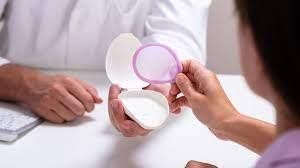The healthcare provider prescribes dopamine 2 mcg/kg/min intravenously (IV) for client who weighs 60 kg. The IV bag contains dopamine 200 mg in dextrose 5% in water (DW) 250 mL. The nurse should program the infusion pump to deliver how many mL/hour? (Enter numerical value only.)
The Correct Answer is ["9"]
Here are the steps you can follow to calculate the infusion pump flow rate:
Step 1: Calculate the prescribed dose in mcg/min
- Dose per weight: 2 mcg/kg/min * 60 kg = 120 mcg/min
Step 2: Convert the concentration in the IV bag to mcg/mL
- Convert mg to mcg: 200 mg * 1000 mcg/mg = 200,000 mcg
- Concentration: 200,000 mcg / 250 mL = 800 mcg/mL
Step 3: Calculate the flow rate in mL/min
- Flow rate: 120 mcg/min / 800 mcg/mL = 0.15 mL/min
Step 4: Convert the flow rate to mL/hour
- Hour conversion: 0.15 mL/min * 60 min/hour = 9 mL/hour
Therefore, the nurse should program the infusion pump to deliver 9 mL/hour.
Nursing Test Bank
Naxlex Comprehensive Predictor Exams
Related Questions
Correct Answer is D
Explanation
A) Incorrect- This is true; the diaphragm should be inserted before sexual activity. However, the main concern in this scenario is the need for refitting after childbirth.
B) Incorrect- This statement is not accurate. While the diaphragm is a form of contraception, it is not considered one of the most effective methods. Long-acting reversible contraceptives
(LARCs) like intrauterine devices (IUDs) and hormonal implants are among the most effective methods.
C) Incorrect- Vaseline lubricant can be used when inserting the diaphragm: Vaseline and other oil-based lubricants can weaken the latex or cause damage to the diaphragm. Water-based lubricants are recommended for use with diaphragms.
D) Correct- The diaphragm is a barrier contraceptive device that is inserted into the vagina before sexual intercourse to prevent pregnancy. However, its effectiveness can be compromised by changes in the anatomy of the vaginal canal, cervix, and pelvic structures, such as those that occur after childbirth. After vaginal childbirth, the pelvic structures may undergo changes, including stretching and possible loss of tone. These changes can affect the fit and position of the diaphragm, leading to decreased contraceptive efficacy. Therefore, it's important for women who have given birth to have their diaphragm refitted by a healthcare provider before resuming its use.

Correct Answer is {"dropdown-group-1":"B","dropdown-group-2":"B"}
Explanation
Whether you are a student looking to ace your exams or a practicing nurse seeking to enhance your expertise , our nursing education contents will empower you with the confidence and competence to make a difference in the lives of patients and become a respected leader in the healthcare field.
Visit Naxlex, invest in your future and unlock endless possibilities with our unparalleled nursing education contents today
Report Wrong Answer on the Current Question
Do you disagree with the answer? If yes, what is your expected answer? Explain.
Kindly be descriptive with the issue you are facing.
